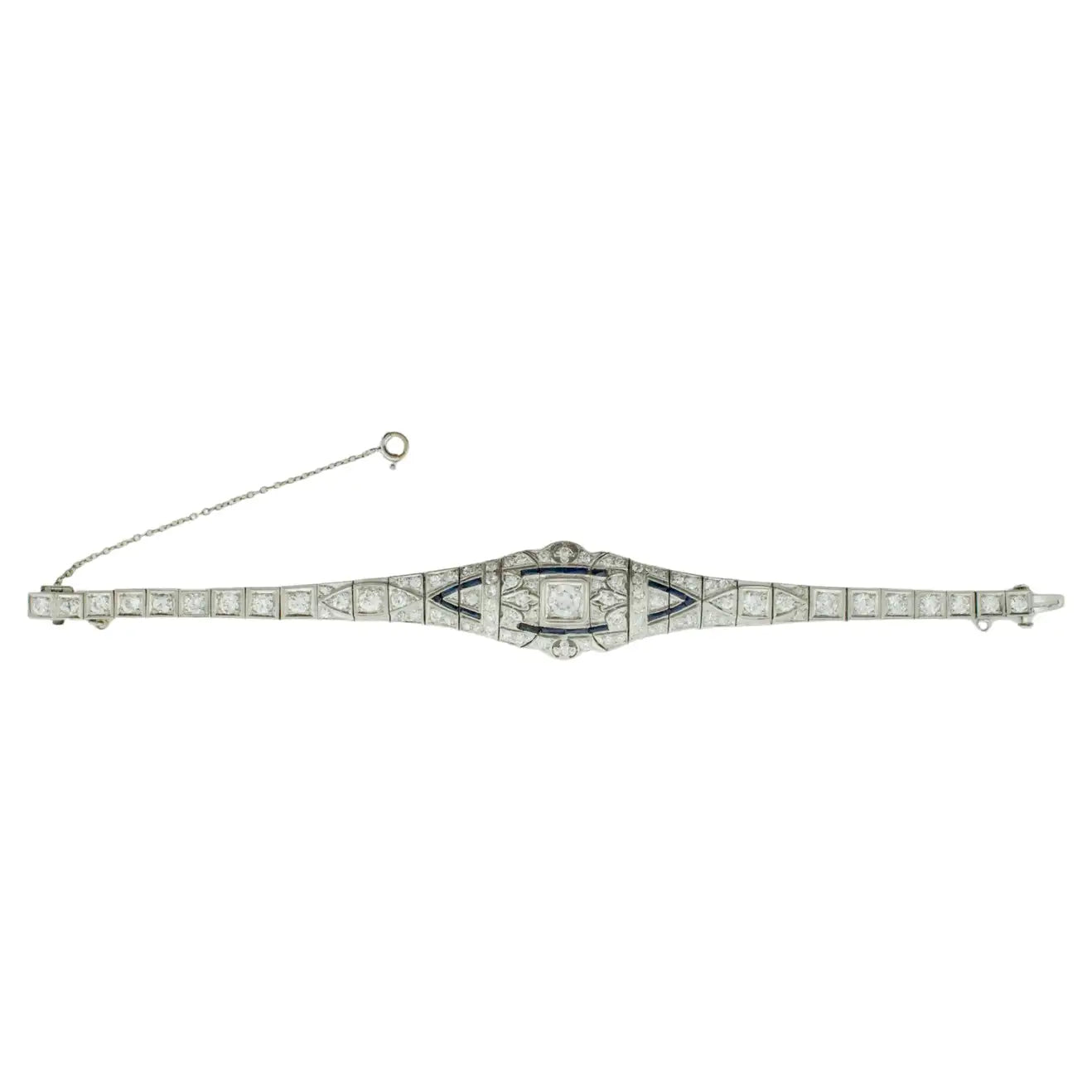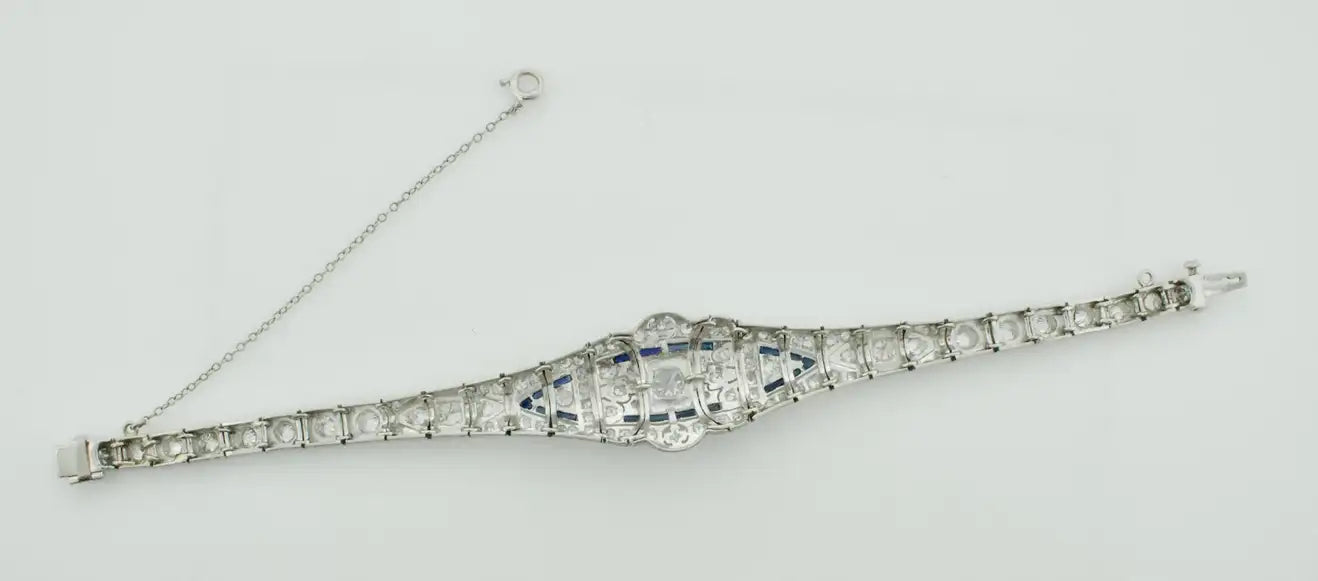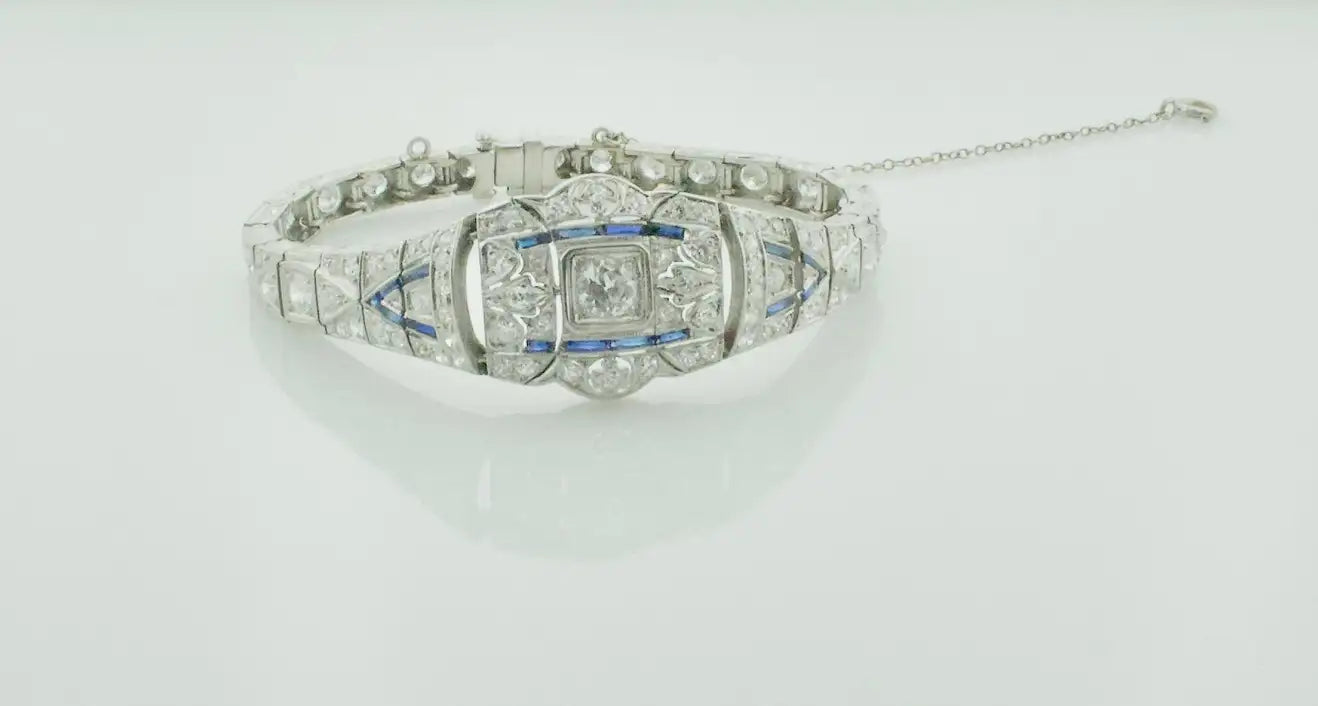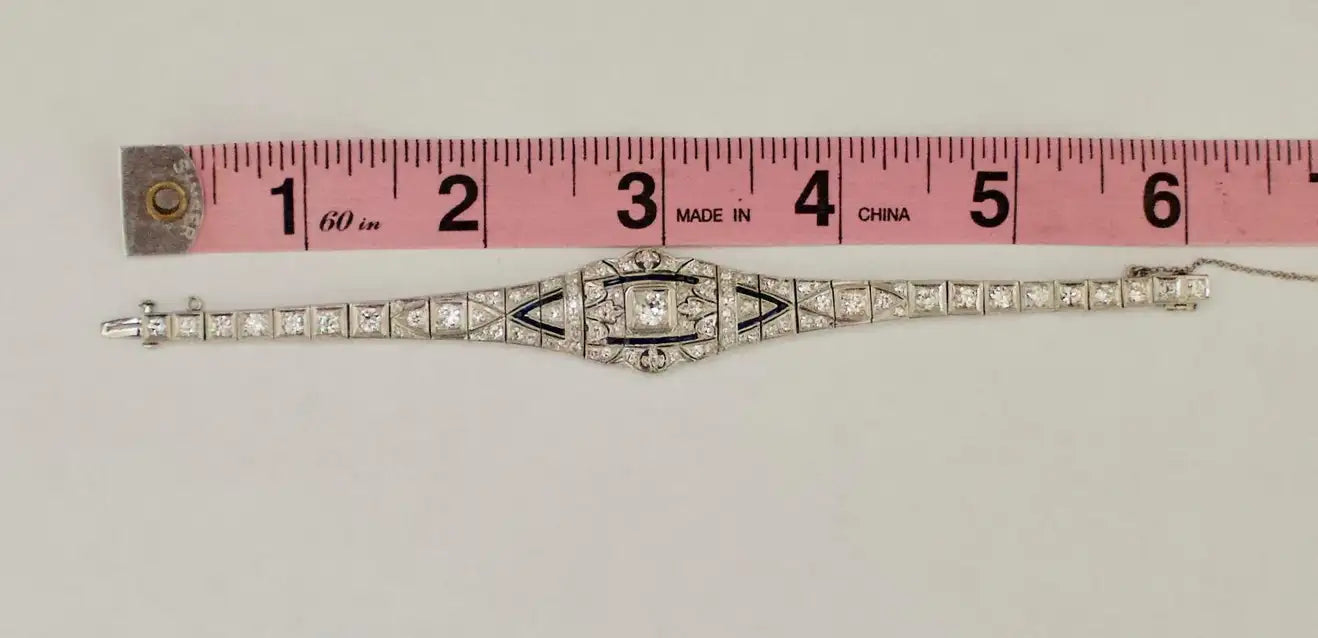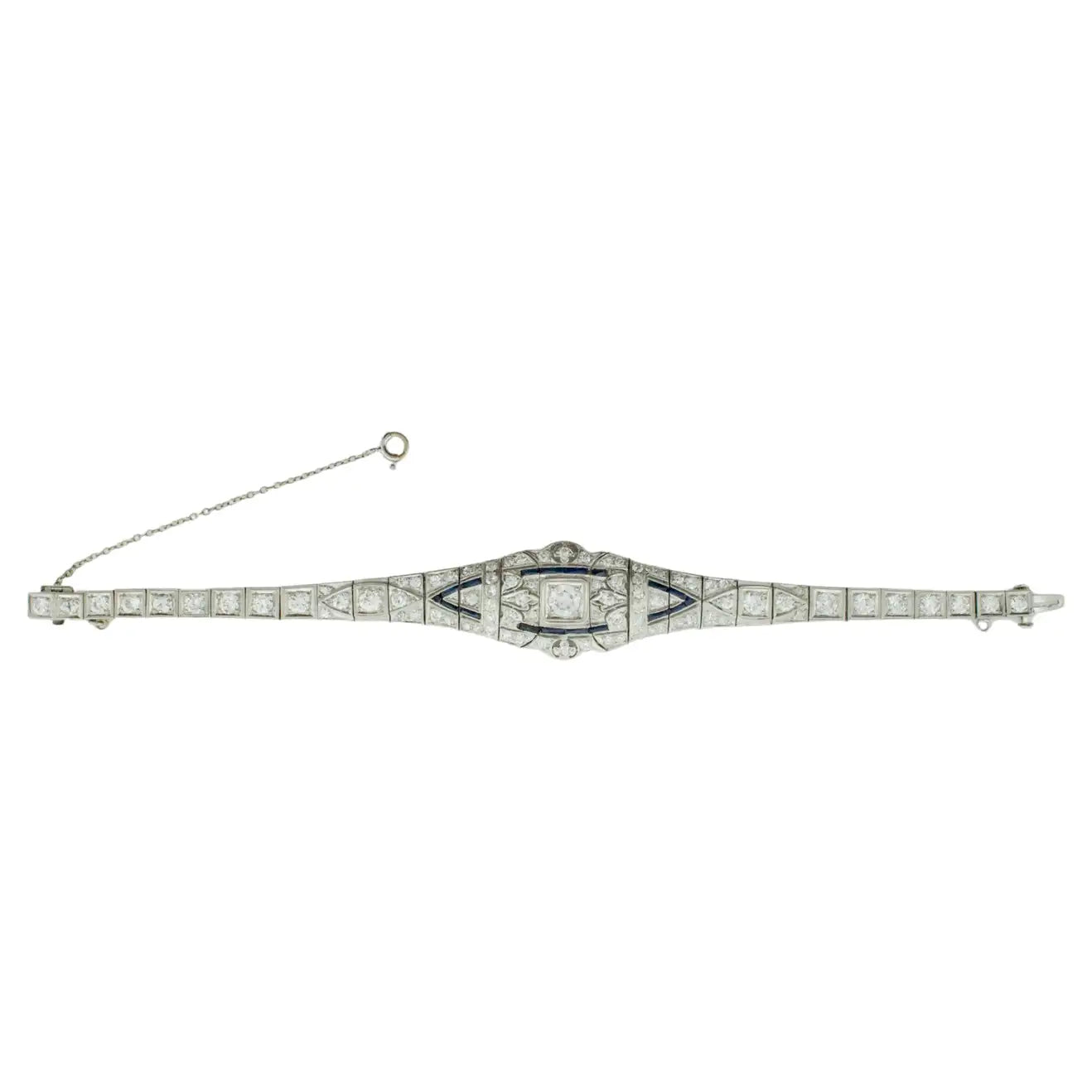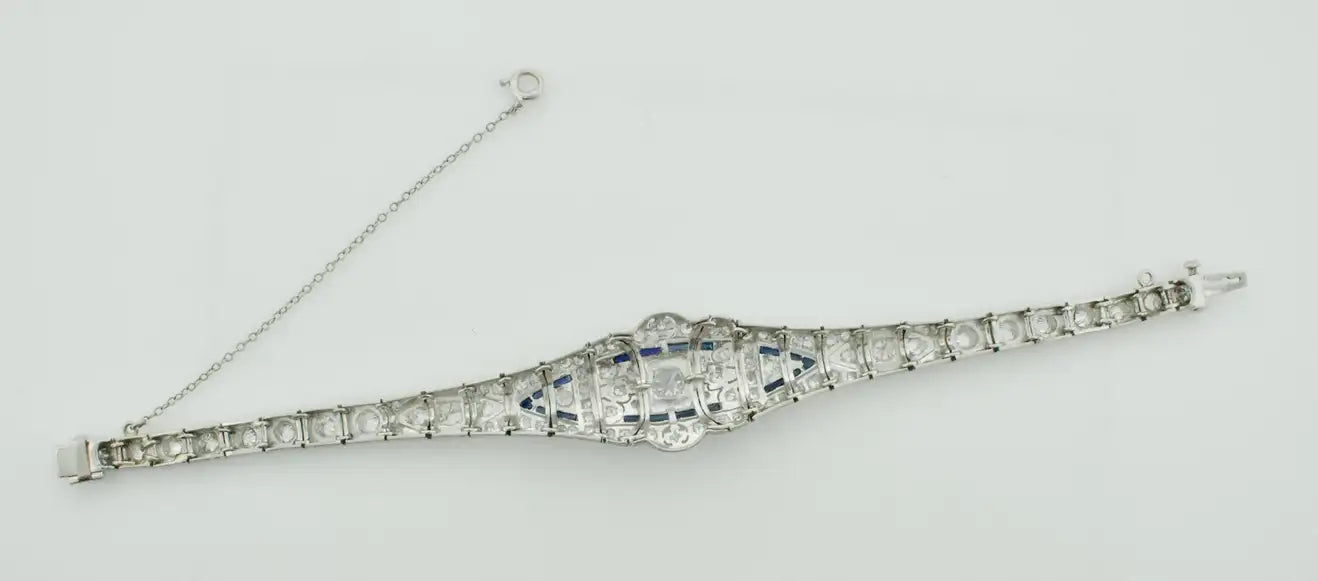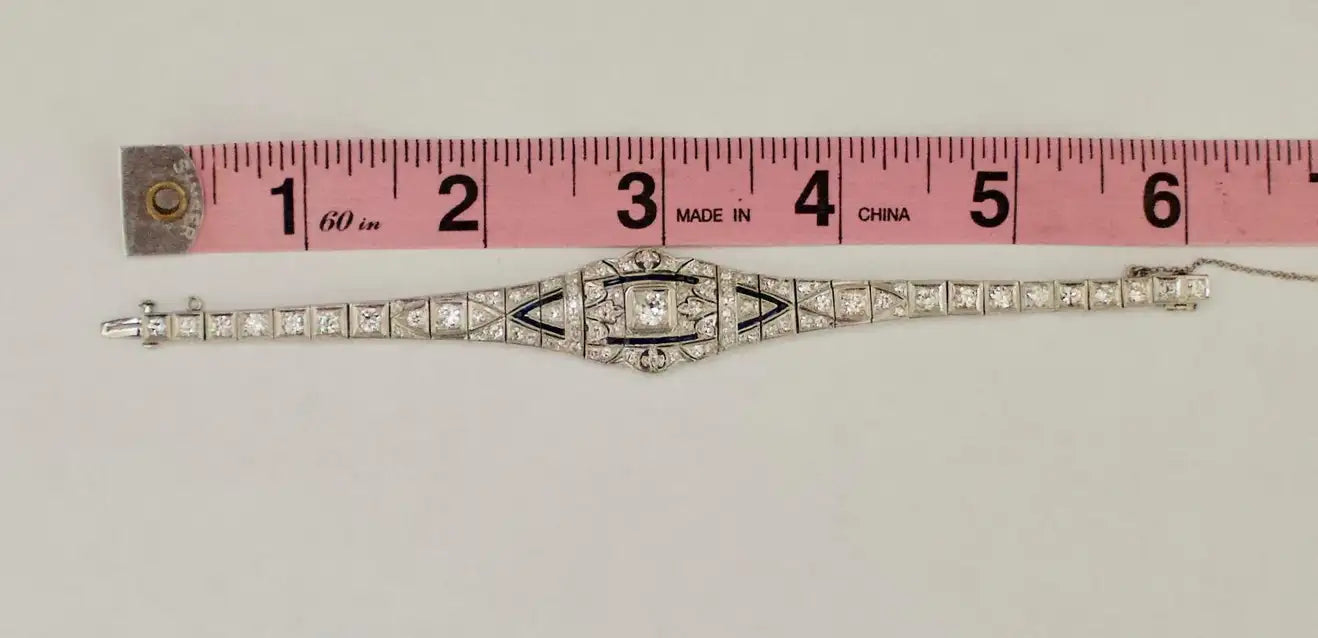Grand Jewels of Wailea
Petite Extreme Art Deco Platinum Diamond and Synthetic Sapphire Bracelet C.1920
Petite Extreme Art Deco Platinum Diamond and Synthetic Sapphire Bracelet C.1920
Regular price
$14,550.00 USD
Regular price
$14,550.00 USD
Sale price
$14,550.00 USD
Unit price
per
Couldn't load pickup availability
Petite Extreme Art Deco Platinum Diamond and Synthetic Sapphire Bracelet c.1920
Looking for a vintage piece of jewelry that is truly one of a kind? Look no further than this Extreme Art Deco Lady's Platinum Diamond/Synthetic Sapphire Circa 1920's Bracelet. This stunning bracelet is crafted from platinum and features a combination of diamonds and synthetic sapphires in a striking Art Deco design.
The bracelet boasts 18 old European cut diamonds weighing in at approximately 2.15 carats, as well as 69 round diamonds weighing approximately 2.20 carats. The diamonds are GHI VS2- SI in quality, with a total diamond weight of 4.35 carats (approx.). The bracelet is also adorned with 18 French cut synthetic sapphires, adding a pop of rich blue color to the design. To top it off, the bracelet features one old European cut diamond weighing approximately 0.35 carats, which serves as a centerpiece of the design.
This stunning piece is truly a work of art, and is perfect for anyone who wants to add a touch of vintage glamour to their collection. Whether you're looking for a special piece of jewelry for a formal occasion, or simply want to treat yourself to something truly special, this Extreme Art Deco Lady's Platinum Diamond/Synthetic Sapphire Circa 1920's Bracelet is sure to impress. So why wait? Add this unique and beautiful bracelet to your collection today!
Synthetic sapphires have a long history in the jewelry industry, dating back to the early 1900s. The first synthetic sapphire was created in 1902 by a French chemist named Auguste Verneuil. Verneuil discovered that he could grow crystals in a lab using a process called flame fusion. This involved melting a powdered form of aluminum oxide (the primary component of natural sapphire) and then allowing it to cool and crystallize into a synthetic sapphire.
The first synthetic sapphires produced by Verneuil were used primarily in industrial applications, such as in the manufacture of scientific instruments and watch components. However, it wasn't long before jewelry makers recognized the potential of synthetic sapphires as a more affordable and versatile alternative to natural sapphires.
In the 1920s and 1930s, synthetic sapphires began to be used in jewelry, particularly in mass-produced costume jewelry. Because synthetic sapphires could be made in a variety of colors, including blue, yellow, and pink, they were ideal for creating affordable and colorful jewelry pieces. During World War II, the use of natural sapphires in jewelry declined due to the disruption of the global supply chain. This further boosted the popularity of synthetic sapphires, as they were more readily available and less expensive than their natural counterparts.
Today, synthetic sapphires are widely used in jewelry and can be found in a range of styles and price points. They are valued for their durability and versatility, and many people choose synthetic sapphires for their engagement rings or other special occasion jewelry.
Looking for a vintage piece of jewelry that is truly one of a kind? Look no further than this Extreme Art Deco Lady's Platinum Diamond/Synthetic Sapphire Circa 1920's Bracelet. This stunning bracelet is crafted from platinum and features a combination of diamonds and synthetic sapphires in a striking Art Deco design.
The bracelet boasts 18 old European cut diamonds weighing in at approximately 2.15 carats, as well as 69 round diamonds weighing approximately 2.20 carats. The diamonds are GHI VS2- SI in quality, with a total diamond weight of 4.35 carats (approx.). The bracelet is also adorned with 18 French cut synthetic sapphires, adding a pop of rich blue color to the design. To top it off, the bracelet features one old European cut diamond weighing approximately 0.35 carats, which serves as a centerpiece of the design.
This stunning piece is truly a work of art, and is perfect for anyone who wants to add a touch of vintage glamour to their collection. Whether you're looking for a special piece of jewelry for a formal occasion, or simply want to treat yourself to something truly special, this Extreme Art Deco Lady's Platinum Diamond/Synthetic Sapphire Circa 1920's Bracelet is sure to impress. So why wait? Add this unique and beautiful bracelet to your collection today!
Synthetic sapphires have a long history in the jewelry industry, dating back to the early 1900s. The first synthetic sapphire was created in 1902 by a French chemist named Auguste Verneuil. Verneuil discovered that he could grow crystals in a lab using a process called flame fusion. This involved melting a powdered form of aluminum oxide (the primary component of natural sapphire) and then allowing it to cool and crystallize into a synthetic sapphire.
The first synthetic sapphires produced by Verneuil were used primarily in industrial applications, such as in the manufacture of scientific instruments and watch components. However, it wasn't long before jewelry makers recognized the potential of synthetic sapphires as a more affordable and versatile alternative to natural sapphires.
In the 1920s and 1930s, synthetic sapphires began to be used in jewelry, particularly in mass-produced costume jewelry. Because synthetic sapphires could be made in a variety of colors, including blue, yellow, and pink, they were ideal for creating affordable and colorful jewelry pieces. During World War II, the use of natural sapphires in jewelry declined due to the disruption of the global supply chain. This further boosted the popularity of synthetic sapphires, as they were more readily available and less expensive than their natural counterparts.
Today, synthetic sapphires are widely used in jewelry and can be found in a range of styles and price points. They are valued for their durability and versatility, and many people choose synthetic sapphires for their engagement rings or other special occasion jewelry.
